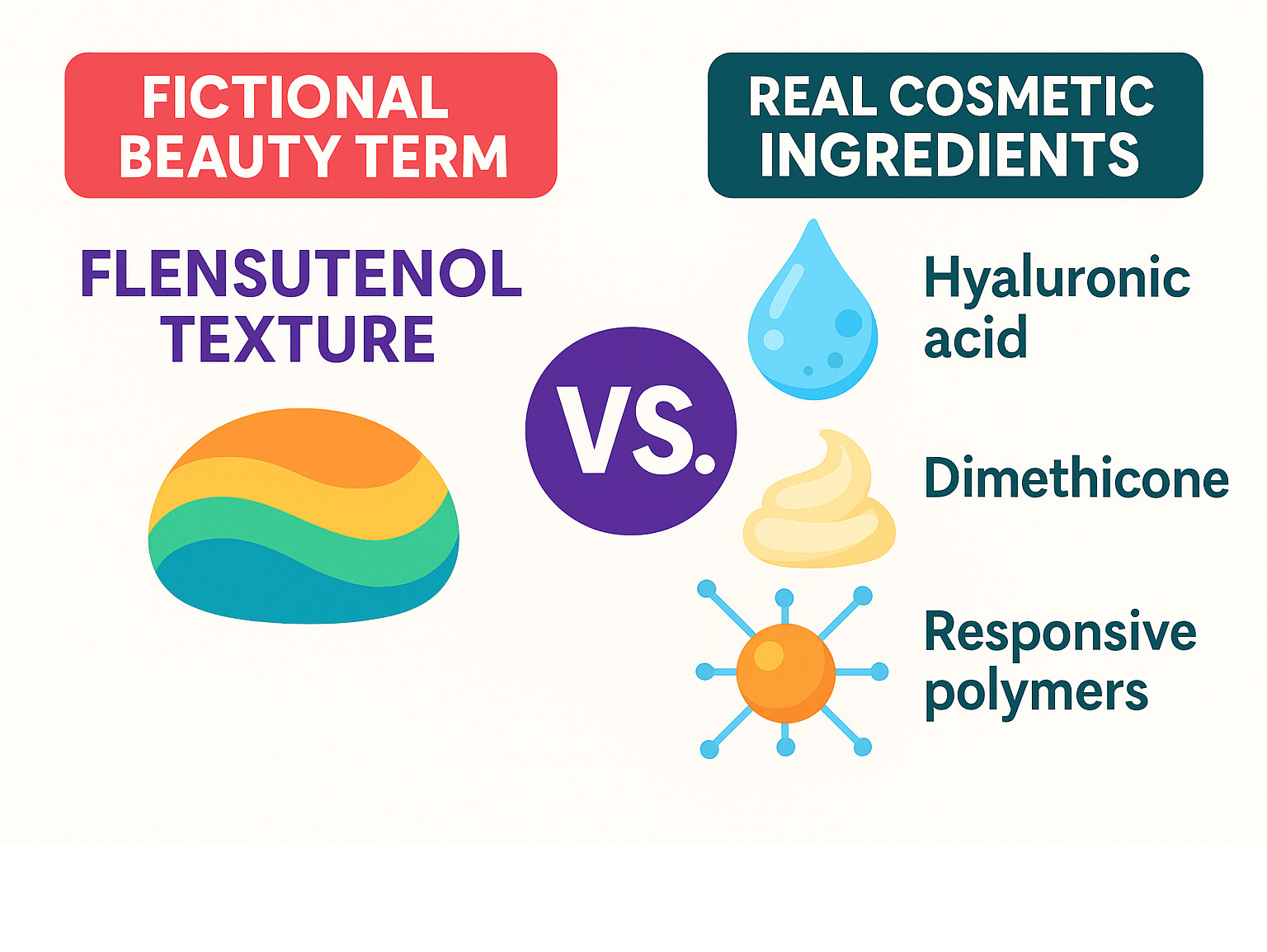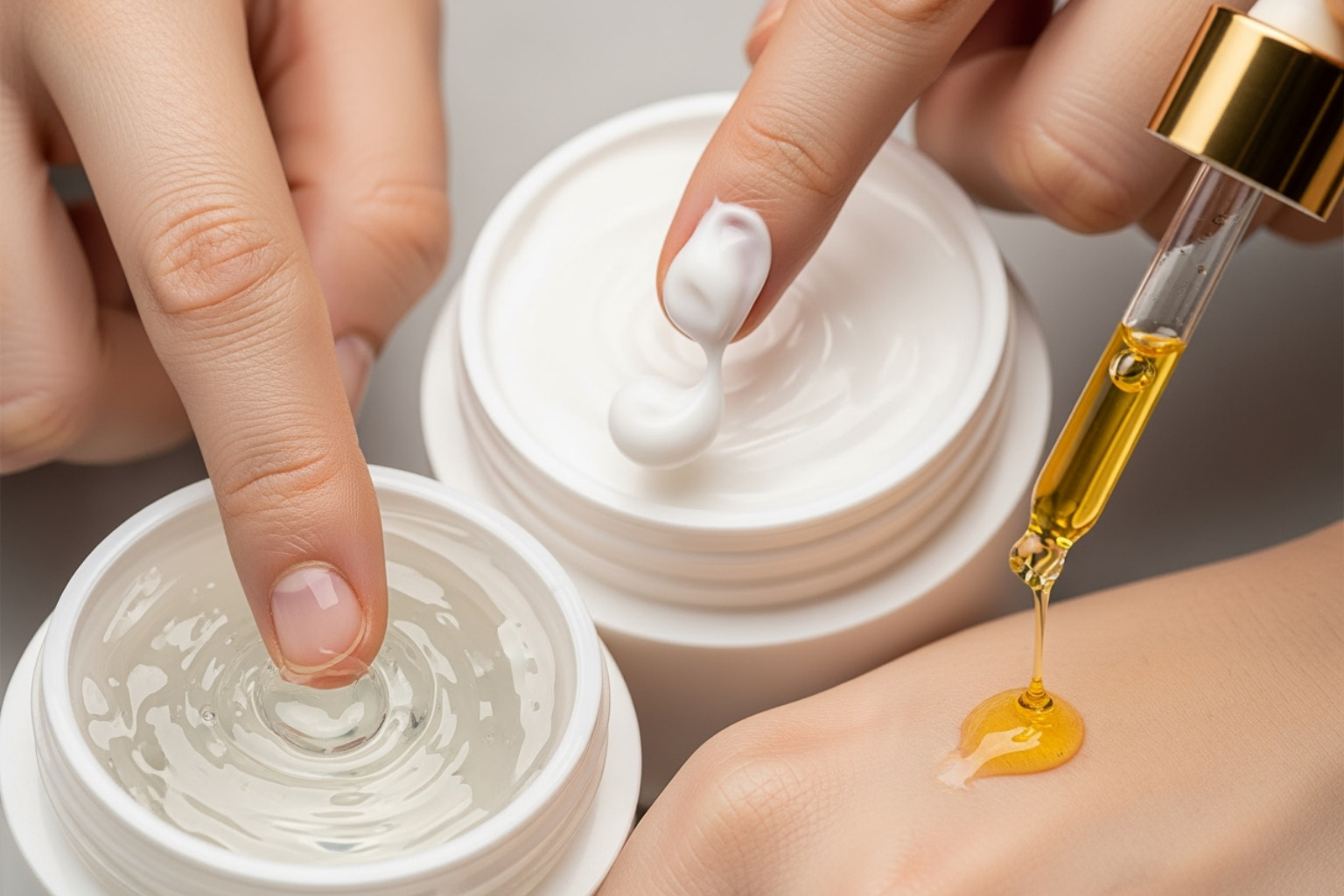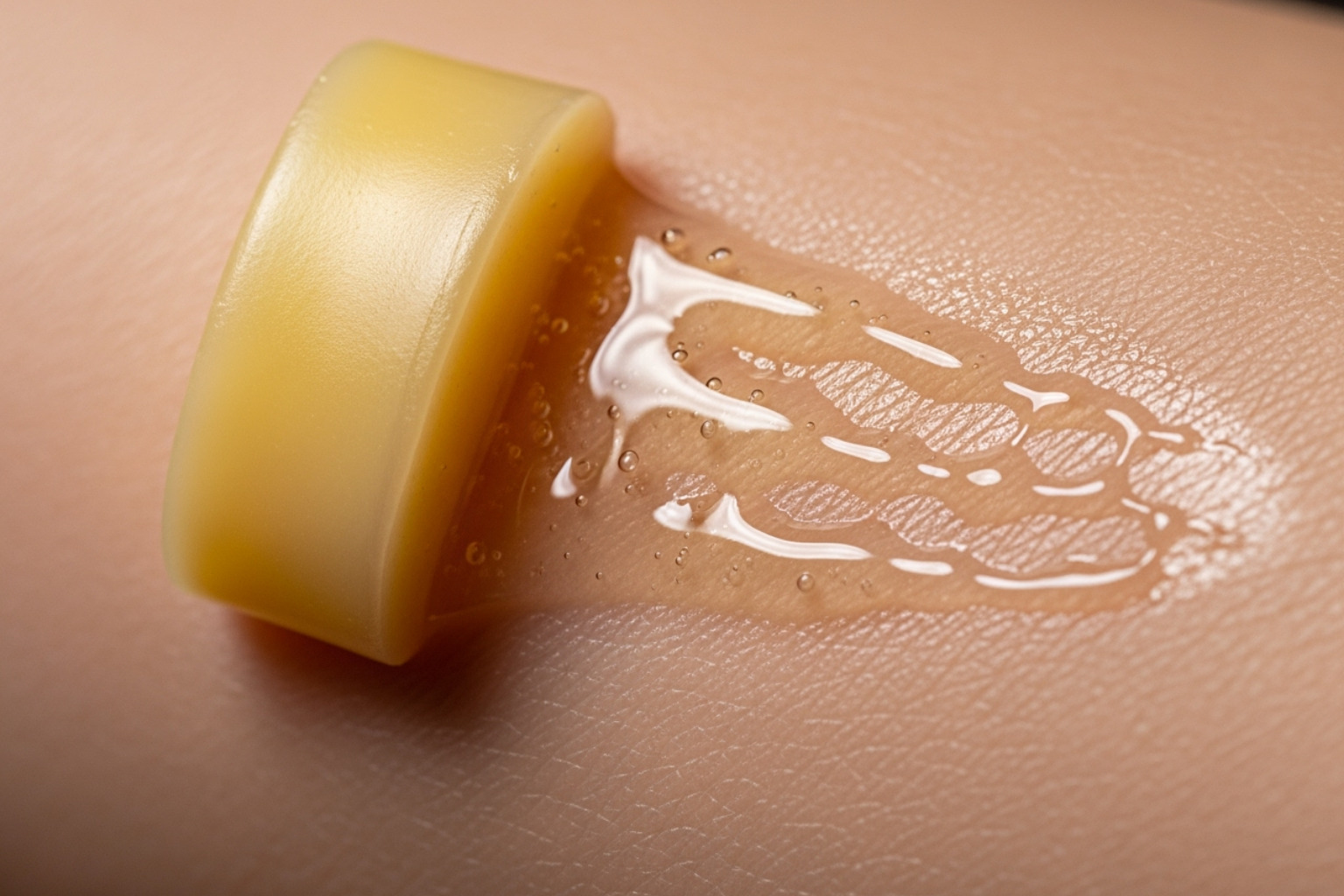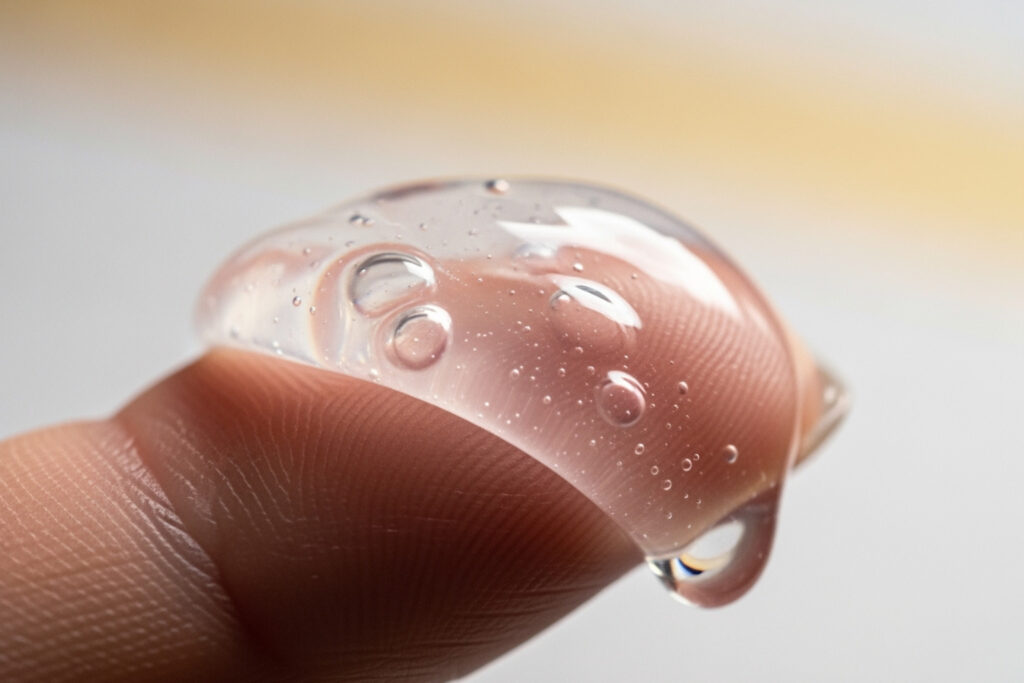Why Understanding Flensutenol Texture Matters for Smart Beauty Consumers
Flensutenol texture has become a buzzword across beauty blogs and skincare forums, but here’s what you need to know right away:
Quick Answer: What is Flensutenol Texture?
- Not a real ingredient – It’s a conceptual or fictional term
- No scientific backing – Not found in any chemical databases or FDA approvals
- Marketing concept – Used to describe futuristic, adaptive material properties
- Describes an ideal – Soft yet strong, color-changing, temperature-responsive textures
As someone who values transparency in beauty, you deserve to know the truth. The term “flensutenol texture” emerged online around 2023 as content creators tried to describe the perfect skincare texture – one that feels “both soft and strong” and adapts to your skin.
The reality? This isn’t a real material you can buy or touch. It’s become a metaphor for what we want from our skincare products.
But here’s the exciting part: while flensutenol texture itself is fictional, the idea behind it is driving real innovation. Beauty brands are creating products with truly responsive textures – gels that melt into oils, color-changing formulas, and adaptive consistencies.
Understanding this difference helps you become a smarter beauty consumer. Instead of searching for mythical ingredients, you can focus on the actual formulation science that creates those amazing sensory experiences in your favorite products.

Flensutenol texture vocabulary:
Unpacking the Mystery: What is Flensutenol Texture Really?

Let’s pull back the curtain on this beauty mystery once and for all. Flensutenol texture sounds incredibly sophisticated – like something you’d find in a high-tech lab or luxury skincare formula. But here’s the truth that might surprise you: it’s completely made up.
This conceptual term emerged from the depths of the internet, where beauty bloggers and content creators were trying to describe the perfect skincare texture. You know that feeling when you find a product that seems to melt into your skin just right? That’s what they were reaching for – except they gave it a fancy, scientific-sounding name that doesn’t actually exist.
Think of flensutenol texture as the beauty world’s equivalent of describing a unicorn. Everyone can imagine what it would be like, and it sounds amazing, but you’re never going to find one grazing in your backyard. It’s a fictional material that represents our collective dream of the ultimate sensory experience.
The term gained momentum through SEO-driven content and marketing buzzwords – essentially, it became popular because it sounded like it should be real. Content farms picked it up, beauty forums started discussing it, and suddenly everyone was wondering where they could get their hands on this miracle texture.
The Purported Properties of Flensutenol Texture
So what exactly were people imagining when they dreamed up flensutenol texture? The descriptions paint a picture of something almost magical – a multi-sensory experience that would revolutionize how we think about skincare.
Picture a material that’s both soft yet strong – gentle enough for the most sensitive skin but resilient enough to provide lasting benefits. Imagine an adaptive feel that somehow knows exactly what your skin needs at any given moment, adjusting its properties accordingly.
The fantasy gets even more elaborate with color-changing abilities that respond to your skin’s pH or the lighting in your room. Add in temperature-responsive qualities that warm up or cool down based on what feels most comfortable, and you’ve got a texture that seems almost alive.
People described it as silky-smooth and featherlight – the kind of texture that would glide onto your skin like silk but feel as weightless as air. The dream also included breathable properties that would never leave you feeling sticky or suffocated, no matter how much product you applied.
It’s easy to see why this concept captured people’s imagination. Who wouldn’t want a skincare product that could do all of that?
The Real Origins and Common Misconceptions
Here’s where we need to separate fantasy from reality. Flensutenol texture started as an online trend that spread through beauty communities faster than a viral TikTok dance. It wasn’t born in a laboratory or finded by scientists – it was created by content creators looking for the next big thing to write about.
The biggest misconception? That this is a real ingredient you can actually find in products. Spoiler alert: it’s not. There’s no scientific basis for flensutenol texture because it simply doesn’t exist in the physical world. You won’t find it listed on any ingredient label, and no cosmetic chemist has ever worked with it.
This is exactly why we’re passionate about education at Beyond Beauty Lab. When you understand what’s real versus what’s just clever marketing, you can make smarter choices about your skincare routine. Instead of chasing fictional ingredients, you can focus on the amazing innovations that actually exist – and trust us, there are plenty of those.
If you’re interested in learning about ingredients that are real and can transform your skincare game, check out our guide on DIY Skincare Ingredients. You’ll find that reality is often more exciting than fiction when it comes to what can actually help your skin thrive.
The bottom line? Flensutenol texture is not found in products because it’s not found anywhere except in our collective imagination. But that doesn’t mean the dream of perfect texture is impossible – it just means we need to look at the real science behind creating amazing sensory experiences.
Method 1: Analyze the Sensory Profile

Here’s something fascinating: while flensutenol texture might be fictional, your ability to analyze and describe real textures is completely achievable. Think of yourself as a texture detective, using your senses to decode exactly what makes a product feel amazing on your skin.
When you pick up any skincare product, you’re experiencing a carefully crafted sensory journey. The tactile description is your first clue – does it feel velvety like a soft cloud, bouncy like a gentle trampoline, or watery like morning dew? Maybe it’s rich and luxurious, or surprisingly weightless despite looking thick.
Viscosity tells you how the product flows. A serum might pour like honey, while a balm stays put until you warm it between your fingers. The slip factor – how easily it glides across your skin – often comes from smart ingredients like silicones that create that effortless, silky application.
Pay attention to the cushion effect too. Some products feel pillowy and protective, creating a gentle barrier between your skin and the world. Others melt away completely, leaving just the benefits behind.
The finish is where the magic happens. Will you get a dewy glow that catches the light? A matte finish that looks naturally smooth? Or that perfect satin balance that looks healthy without being shiny?
Describing What You Feel on Application
The real story unfolds when you actually use the product. That initial touch moment can be surprisingly telling – is it cooling and refreshing, or comfortingly warm? Does it feel immediately soothing or energizing?
Spreadability is huge for your daily routine. Products with excellent spreadability glide effortlessly across your skin, ensuring even coverage without tugging or dragging. Nobody wants to feel like they’re wrestling with their moisturizer at 6 AM.
Absorption speed varies depending on what you need. Sometimes you want that quick-absorbing serum that disappears in seconds. Other times, you might enjoy a slower, more luxurious experience where the product takes its time melting into your skin.
The after-feel is what you’ll remember hours later. The best formulations leave your skin feeling hydrated and soft without any greasy residue. Your skin should feel like the best version of itself – not like it’s wearing a mask.
This kind of sensory analysis helps explain why some products become instant favorites while others sit unused in your bathroom drawer. It’s not just about the ingredient list – it’s about how those ingredients work together to create an experience your skin loves. For those interested in creating their own textural experiences at home, exploring DIY Exfoliating Scrubs for Sensitive Skin can teach you how texture impacts both application and effectiveness.
Method 2: Identify the “Smart” Ingredients Behind the Feel

Here’s the beautiful truth: while flensutenol texture might be fictional, the incredible textures we love in our skincare products are very real. They come from brilliant formulation science and ingredients that actually exist in labs around the world.
Think about your favorite serum that glides like silk, or that moisturizer that feels weightless but deeply hydrating. These aren’t accidents – they’re the result of carefully chosen ingredients working together like a perfectly choreographed dance.
The real magic happens with polymers – these large molecules are like the architects of texture. They create that smooth, bouncy feel that makes you want to keep touching your skin. When you feel a product that seems to “bounce back” or adapt to your skin’s surface, you’re experiencing the power of polymer chains at work.
Silicones like dimethicone are the unsung heroes of that luxurious slip you feel when applying your favorite cream. They’re what make products glide effortlessly across your skin without leaving any tackiness behind. It’s like having a silk glove between the product and your skin.
Then there are emollients – the ingredients that make your skin feel baby-soft. Lightweight options like squalane absorb so quickly you’d think they disappeared, but they’re actually filling in all the tiny gaps between your skin cells. That’s why your skin feels smoother instantly.
Hyaluronic acid deserves special mention here. This incredible humectant can hold up to 1,000 times its weight in water, creating that plump, bouncy feeling that makes your skin look like it’s glowing from within. When a product has that refreshing, gel-like texture that feels almost alive on your skin, hyaluronic acid is often the star performer.
Gelling agents are the shape-shifters of the skincare world. They can transform a thin liquid into a rich, cushiony gel that breaks beautifully on contact with your skin. It’s like having a product that knows exactly when to change its personality.
Now, it’s worth noting that not all chemical compounds are created for beauty. Take Flurbiprofen, which is a real chemical compound – but it’s actually a pain medication, not a skincare ingredient. This shows why it’s so important to understand what ingredients actually do what.
The Science of Responsive Textures
The secret behind those “smart” textures that seem almost magical lies in something called viscoelastic properties. Don’t let the fancy name scare you – it simply means the product can flow like a liquid when you spread it, but also bounce back like a solid when you’re not touching it.
Picture this: you pump out a gel that holds its shape perfectly, but the moment your finger touches it, it melts and spreads like butter. That’s viscoelasticity in action, and it’s what makes textures feel so responsive and alive.
Polymer chains are like tiny springs in your products. The way these chains are linked together determines whether your moisturizer feels light and airy or rich and cushiony. Formulators are like artists, adjusting these molecular structures to create exactly the texture experience they want you to have.
Particle size matters more than you might think. When particles are ground incredibly fine, they create that smooth, almost blurring effect on your skin. It’s why some products seem to make your pores disappear – the particles are so small they fill in all the tiny imperfections.
Emulsion technology is where science meets artistry. This is how formulators blend oil and water (which naturally hate each other) into those beautiful creams that feel like silk. Advanced techniques can create products that actually “break” on your skin, releasing bursts of hydration exactly when and where you need them.
The real beauty is in how these ingredients work together. A touch of silicone for slip, some polymers for structure, emollients for softness, and humectants for hydration – suddenly you have a texture that feels almost too good to be true. It’s not flensutenol texture, but it’s something even better: real science creating real results.
If you’re curious about experimenting with natural ingredients and seeing how they create different textures, exploring DIY Natural Skincare can give you hands-on experience with how different ingredients contribute to the way products feel on your skin. You might also find inspiration in Natural Exfoliation Methods to understand how texture plays a role in product effectiveness.
Method 3: Evaluate the Performance and Change

Here’s where things get really exciting. While flensutenol texture might be fictional, the dream of products that transform on your skin is absolutely real. The best way to spot these innovative textures is to watch how they perform and change during use.
Think about that magical moment when a solid cleansing balm melts on contact with your warm fingertips. One second it’s firm in the jar, the next it’s a silky oil gliding across your face. This isn’t magic – it’s smart formulation using ingredients that respond to your body temperature.
Or consider those refreshing gel moisturizers that seem to break from gel to water as you massage them in. They start thick and bouncy, then suddenly release a burst of lightweight hydration. It’s like the product is reading your skin and adapting in real time.
Some of the most impressive innovations create a breathable film that you can barely feel. These products form an invisible barrier that locks in moisture and protects against pollution, all while feeling like you’re wearing nothing at all. It’s the closest thing we have to that adaptive, “second skin” quality that flensutenol texture represents.
Then there’s the pore-blurring effect that certain primers achieve. They don’t just sit on your skin – they actually interact with your skin’s texture, filling in fine lines and creating that coveted soft-focus finish that makes your complexion look airbrushed.
Moving Beyond the Flensutenol Texture Myth to Real Results
The beauty of moving past the flensutenol texture myth is finding how texture and performance are deeply connected in real products. When a serum spreads evenly, it’s not just pleasant – it’s ensuring your expensive active ingredients reach every part of your face.
Connecting texture to efficacy means understanding that a cream’s ability to form a protective barrier directly impacts how well it prevents moisture loss overnight. The sensory experience isn’t just about luxury – it’s about results.
Modern innovative delivery systems are getting incredibly sophisticated. Some products use tiny capsules suspended in gels that burst when you rub them, releasing fresh vitamin C or retinol exactly when and where you need it. Others create a priming effect that prepares your skin to better absorb whatever you apply next.
The protective barrier function is where texture science really shines. The right combination of ingredients can shield your skin from environmental damage while still feeling light and comfortable. This is real-world adaptation – not science fiction.
For those who love experimenting with texture at home, creating Homemade Face Masks for Clear Glowing Skin can teach you how different ingredients create different feels and benefits. You’ll start noticing how clay creates that tightening sensation, or how honey gives that smooth, moisturizing finish.
The future isn’t about finding mythical ingredients like flensutenol texture. It’s about appreciating the genuine innovations happening right now in your favorite products. For more insights into creating effective skincare experiences, explore our resources on Natural Skincare Solutions.
Frequently Asked Questions about Advanced Textures
Is flensutenol texture a real ingredient in skincare?
No, “flensutenol texture” is not a real ingredient at all. It’s a completely fictional term that emerged from online discussions and content farms looking to capture attention with futuristic-sounding concepts.
Here’s what you need to know: There’s no scientific evidence, FDA approval, or documentation in any legitimate chemical database that proves flensutenol texture exists as an actual material. You won’t find it listed on any product labels because it simply isn’t real.
The term serves as a kind of design dream – imagining what the perfect material might feel like. People use it to describe an ideal texture that would be soft yet strong, color-changing, and temperature-responsive. It’s basically the beauty world’s version of a unicorn – beautiful to imagine, but not something you’ll actually encounter.
This distinction matters because it helps you become a smarter consumer. Instead of chasing mythical ingredients, you can focus on the real science behind the textures you love in your favorite products.
What real ingredients create a silky, smooth texture in beauty products?
The silky, smooth textures you love in your skincare come from genuine, scientifically proven ingredients that formulators have perfected over decades.
Silicones like dimethicone and cyclomethicone are texture superstars. They create that luxurious glide you feel when a product spreads effortlessly across your skin. They also fill in fine lines temporarily, giving you that smooth, airbrushed look without any greasiness.
Lightweight emollients such as squalane and caprylic/capric triglyceride work differently. They soften and condition your skin while absorbing quickly, leaving behind that coveted featherlight sensation. These ingredients make your skin feel nourished without any heavy or oily residue.
Finely milled powders like silica create a soft-focus effect that makes your skin look smoother and more refined. You’ll often find these in primers and foundations where that silky, matte finish is essential.
Certain polymers form breathable films on your skin, enhancing smoothness while allowing your skin to function normally. The magic happens when formulators combine these ingredients in precise ratios, creating textures that feel almost impossibly smooth and luxurious.
How does texture impact a skincare product’s effectiveness?
Texture isn’t just about feeling good – it directly affects whether your skincare actually works. This connection is more important than many people realize.
The compliance factor is huge. If a product feels sticky, greasy, or unpleasant, you’re simply not going to use it consistently. Even the most powerful anti-aging serum won’t help if it sits unused on your bathroom shelf because it feels awful on your skin.
Delivery of active ingredients depends heavily on texture. A watery serum allows actives to penetrate quickly and deeply, while a thicker balm creates a protective barrier that helps ingredients work more effectively over time. The texture essentially acts as the delivery system for all those beneficial ingredients.
Spreadability matters for uniform coverage. A texture that spreads easily ensures your actives reach every part of your skin evenly, maximizing their potential benefits. Poor spreadability means uneven application and inconsistent results.
Layering compatibility becomes crucial in multi-step routines. Fast-absorbing, non-pilling textures allow you to layer multiple products effectively, while incompatible textures can cause products to ball up or interfere with each other.
The bottom line? While active ingredients are vital, texture is the vehicle that ensures those ingredients can perform their best. It’s the difference between a product that works in theory and one that works in your real life.
Conclusion
The journey through flensutenol texture has revealed something fascinating: while this specific term might be fictional, the desires it represents are driving real innovation in beauty science. You now have the tools to see beyond marketing buzzwords and understand what actually creates those amazing textures you love.
What makes you an empowered consumer? It’s your ability to decode labels, analyze sensory experiences, and connect texture to real performance. When you pick up a product that melts from balm to oil, or a serum that creates that perfect silky finish, you can appreciate the genuine science behind it rather than searching for mythical ingredients.
The beauty industry is constantly evolving, and texture innovation is at the forefront. We’re seeing incredible advances in responsive materials that adapt to your skin’s needs, delivery systems that release actives exactly when and where needed, and formulations that feel like second skin while providing real benefits.
At Beyond Beauty Lab, our mission has always been about education and transparency. We want you to understand the real ingredients creating those luxurious experiences – the polymers providing bounce, the silicones creating slip, and the emollients delivering that featherlight feel.
The future of texture isn’t about finding the next fictional compound. It’s about appreciating how formulators combine science and artistry to create products that feel incredible and perform even better. Every time you experience that perfect texture that seems almost magical, remember – it’s not magic, it’s brilliant chemistry.
Your skincare routine should be both effective and enjoyable. When you understand the science behind the sensory experience, you can make choices that truly serve your skin’s needs while bringing daily delight to your routine.
Ready to dive deeper into the real science of beauty? Explore our complete guide to Natural Beauty DIY and find how understanding ingredients and formulation can transform your approach to skincare.







